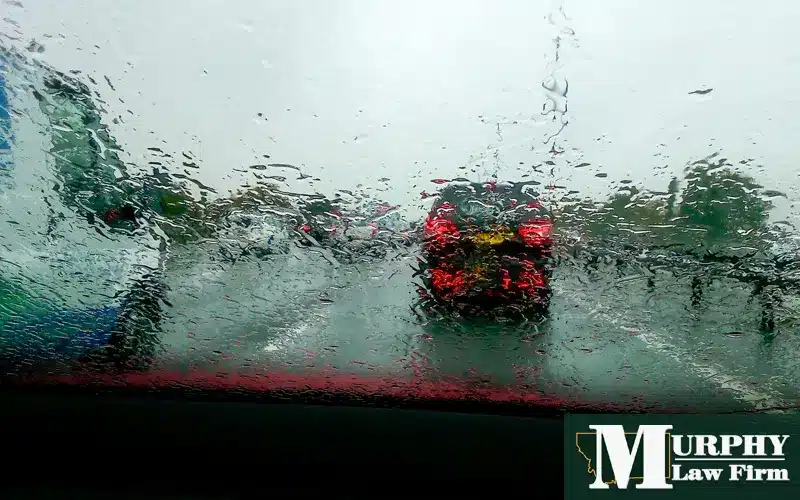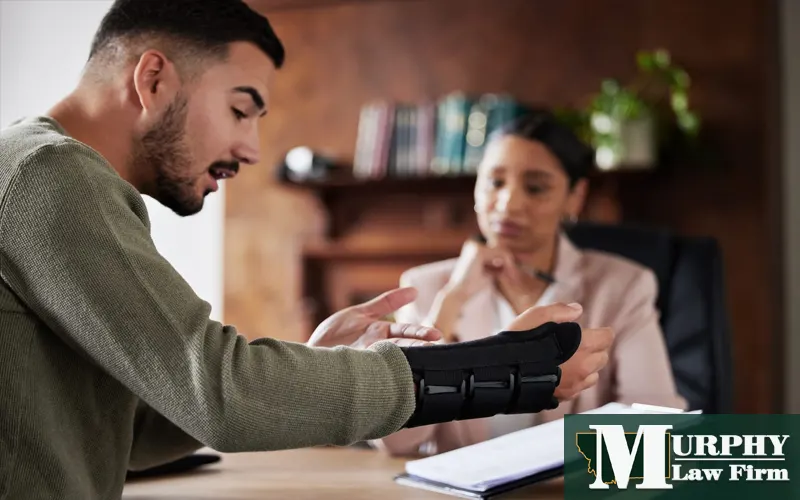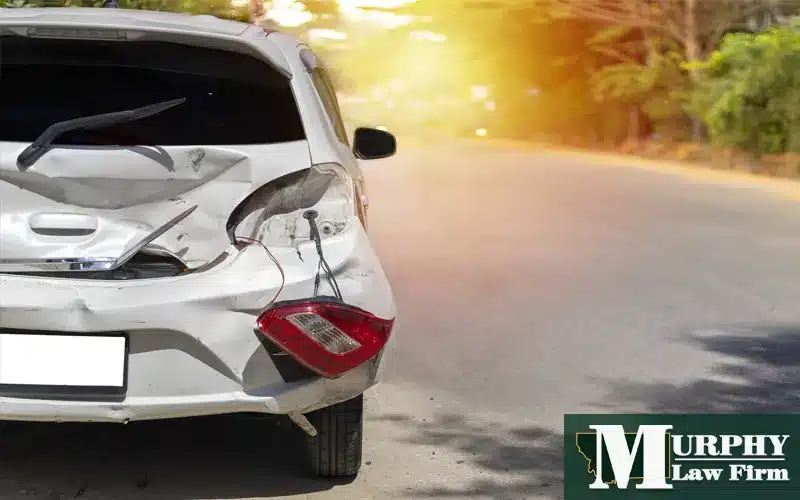
Understand how adverse weather affects Montana roads and liability in a car accident
Montana’s vast landscapes and open roads are as beautiful as they are treacherous, especially when adverse weather conditions come into play.
In 2021 alone, 222 people lost their lives in car accidents in Montana, of which a significant number were attributable, at least in part, to bad weather. This stark statistic underscores the critical impact that weather can have on road safety and the heightened risks drivers face during periods of rain, snow, ice and fog.
This article will delve into the nuances of weather-related accidents in Montana, exploring how elements such as slippery roads, reduced visibility and unpredictable weather patterns not only contribute to the increased risk of crashes but also affect liability determinations in the aftermath of an accident.
If you have questions after reading this article or need help filing a car accident claim, reach out to the experienced Montana car accident attorneys at Murphy Law Firm for a free consultation.
Do most collisions occur in bad weather?
While bad weather is responsible for around a million accidents each year in the U.S., it actually doesn’t cause the majority of accidents.
According to the Federal Highway Administration, there are almost 6 million vehicle crashes in the U.S. annually, and about 21%—roughly 1.2 million—are weather-related, involving conditions like rain, sleet, snow, fog or severe winds. Each year, these weather-related incidents lead to an average of nearly 5,000 fatalities and more than 418,000 injuries.
So, what type of weather causes most car accidents?
The majority of these accidents (70%) occur on wet pavement, with 46% occurring during rainfall. While, surprisingly, winter conditions account for a smaller fraction, as shown below:
- 18% in snow or sleet
- 16% on snowy or slushy surfaces
- 13% on icy roads
- 3% occurring in fog
How does weather impact road safety?
Weather impacts road safety in numerous ways, affecting everything from the physical condition of the roadway to traffic flow and the operational decisions taken by traffic management authorities.
Below are just some of the ways different weather variables influence safety on Montana roads:
- Wind speed. High wind speeds can compromise the stability of vehicles, particularly taller ones, making steering more challenging. Debris carried by strong winds can obstruct roads or damage vehicles, increasing the risk of accidents.
- Precipitation. Rain, snow and sleet decrease pavement friction, leading to longer stopping distances and a heightened risk of hydroplaning or skidding. Heavy precipitation also impairs visibility and can obscure road markings, increasing collision risk.
- Pavement temperature and condition. Extreme temperatures can affect the road surface; high temperatures can make asphalt soft and create ruts, while low temperatures can lead to ice formation, particularly on bridges, making surfaces slippery and dangerous. Other adverse weather, like ice and snow, can further exacerbate or create poor pavement conditions.
- Water level. High water levels from flooding or heavy rain can lead to road submersion or erosion, presenting serious risks to motorists. Flooded roads can hide dangers such as potholes or debris and cause vehicles to stall or lose control.
- Fog. Fog significantly reduces visibility, making it difficult for drivers to see other vehicles, pedestrians and road hazards. This can lead to accidents, especially when drivers fail to adjust their speed to match the reduced visibility.
- Air temperature and humidity. Extreme air temperatures and humidity can influence vehicle performance, including tire pressure and engine efficiency. High humidity can also fog up vehicle windows, reducing visibility and driver reaction time.
Local traffic management and drivers alike must be aware of these impacts and adjust their strategies and behavior accordingly to ensure safety.
Who’s liable in a crash caused by bad weather?
In crashes caused by bad weather, determining liability can be complex, as the weather itself cannot be deemed at fault. However, various parties may still be found liable based on how they responded to the adverse weather conditions.
Here’s who might be held responsible in a bad-weather accident:
- Drivers. Even in bad weather, drivers are expected to exercise due care by adjusting their speed, maintaining safe following distances and using their vehicle’s safety features appropriately. A driver who fails to adjust their driving behavior to the conditions and causes an accident can be found liable.
- Vehicle owners. If a vehicle’s lack of maintenance (e.g., worn tires or faulty windshield wipers) contributed to the accident, the vehicle owner could be held liable, especially if the owner is different from the driver.
- Employers. In cases where a commercial truck is involved, the employer may be held liable if they did not enforce safe driving policies during adverse weather conditions or if they failed to maintain their vehicles properly.
- Manufacturers. Vehicle and parts manufacturers might be held liable if a vehicle’s failure during bad weather due to design or manufacturing defects leads to an accident. This can include failures in systems meant to enhance safety in adverse conditions, such as anti-lock braking systems (ABS) or stability control systems.
- Government entities. State or local government agencies responsible for road maintenance might be found liable if it can be proven that their negligence in maintaining safe road conditions (e.g., failing to plow snow, salt roads, or fix known hazards) contributed to the accident. Additionally, government agencies may also be liable for accidents that involve government vehicles, like police cars or public buses, regardless of weather conditions.
- Third parties. Contractors responsible for road maintenance or construction that leads to unsafe conditions could be liable if their actions or inactions created hazards that contributed to the crash.
In all these scenarios, the key factor in determining liability is negligence. If any party’s failure to act reasonably under the circumstances led to the accident, they could be held responsible.
Establishing liability often requires a detailed investigation into the circumstances surrounding the crash, including the actions of all parties involved and the condition of the road and vehicles at the time of the accident.
Personal Injury vs. Workers’ Compensation in Montana
Learn the key differences between workers’ compensation and personal injury claims so you can maximize your compensation after an accident.
Is Montana a fault or no-fault state?
Montana operates under a “fault” system for car accidents, meaning that the person responsible for causing the accident is also responsible for any resulting harm. This system enables the injured party to seek compensation directly from the at-fault driver’s insurance company or through a personal injury lawsuit to recover damages like medical bills, lost wages, pain and suffering, and more.
Montana also follows the principle of modified comparative negligence, which allows for fault to be distributed among all parties involved in an accident. According to this rule, an injured party can recover damages only if they are found to be 50% or less responsible for the accident. However, their compensation will be reduced by their percentage of fault.
Here’s an example of how modified comparative negligence might work in a weather-related accident:
Suppose you lose control of your vehicle on an icy Montana road and collide with another driver who was speeding at the time of the crash. The investigation determines that you were 40% at fault for not adjusting your driving to the icy conditions, while the other driver was 60% at fault for speeding.
In this case, both of you contributed to the accident, but since the other driver’s fault exceeds 50%, they cannot recover damages. You, on the other hand, can recover damages, but the amount would be reduced by 40% to account for your share of the fault. So, if the total damages were $10,000, you could recover $6,000, reflecting the deduction for your percentage of fault.
Injured in a Montana car accident? Murphy Law Firm can help!
Weather-related crashes present a unique set of challenges for drivers in Montana, necessitating careful navigation through the aftermath to ensure just compensation. At Murphy Law Firm, our Great Falls car accident attorneys have been helping clients recover maximum compensation for over 75 years.
If you find yourself grappling with the consequences of a weather-related crash in Montana, reach out to Murphy Law Firm for a free consultation to learn more about how we can assist with your claim.
Montana Rear-End Collisions: A Guide to Compensation
Learn what’s required to prove fault and recover maximum compensation after a rear-end crash in Great Falls.





